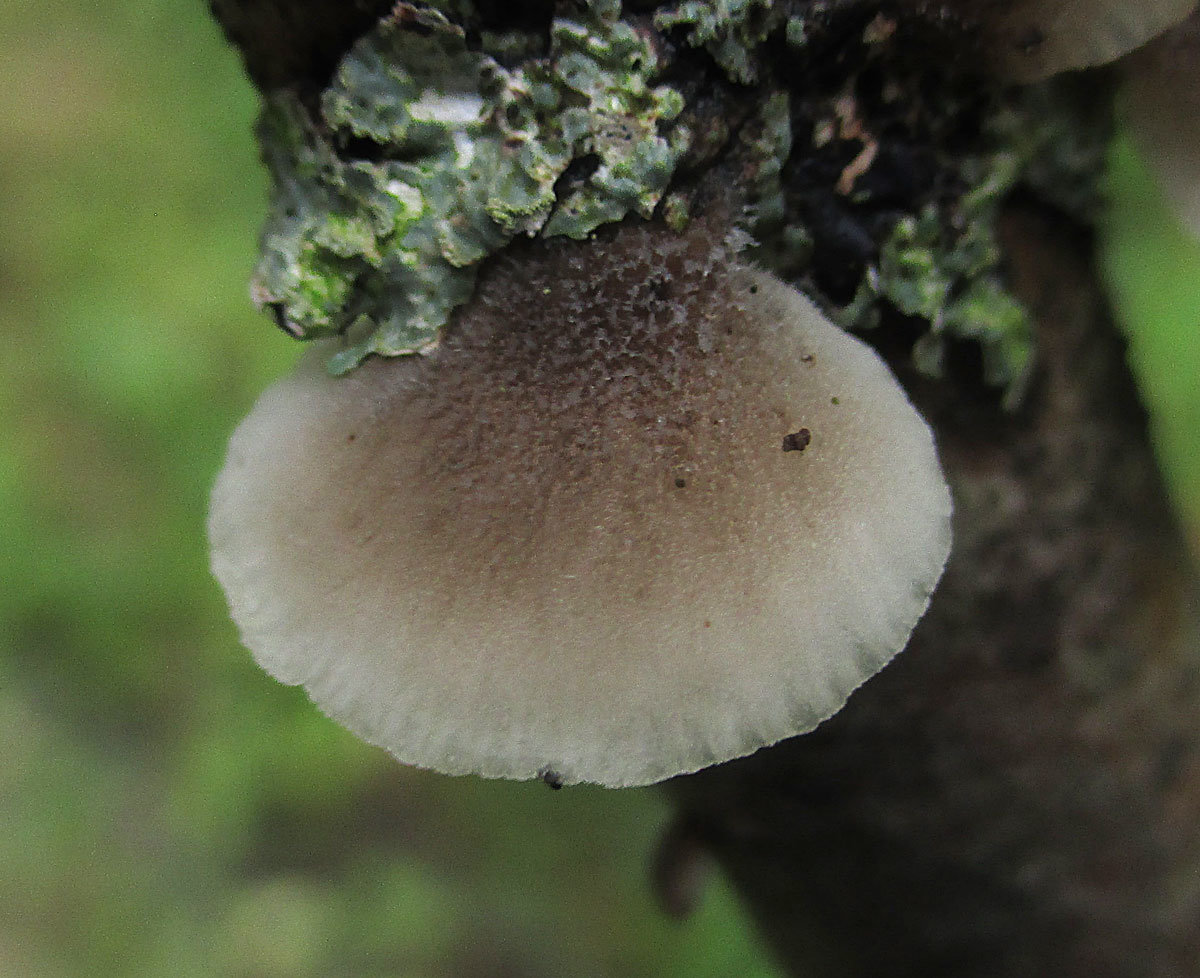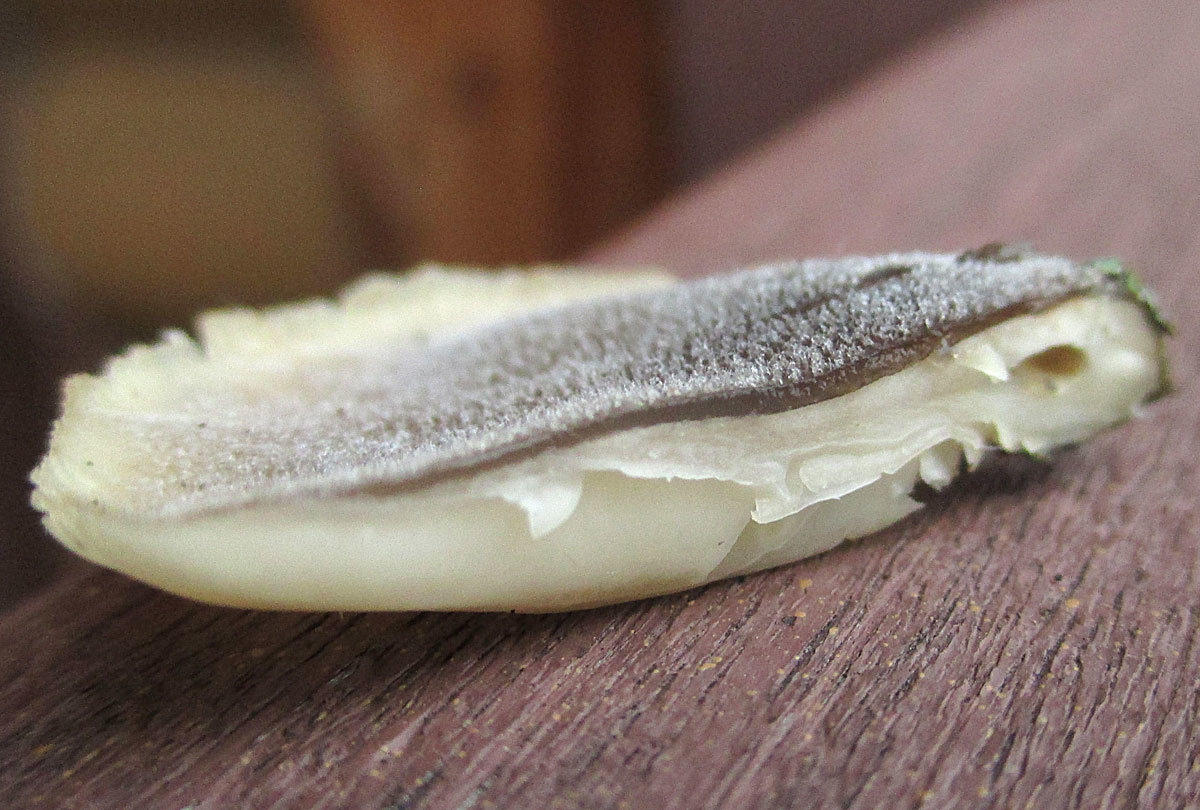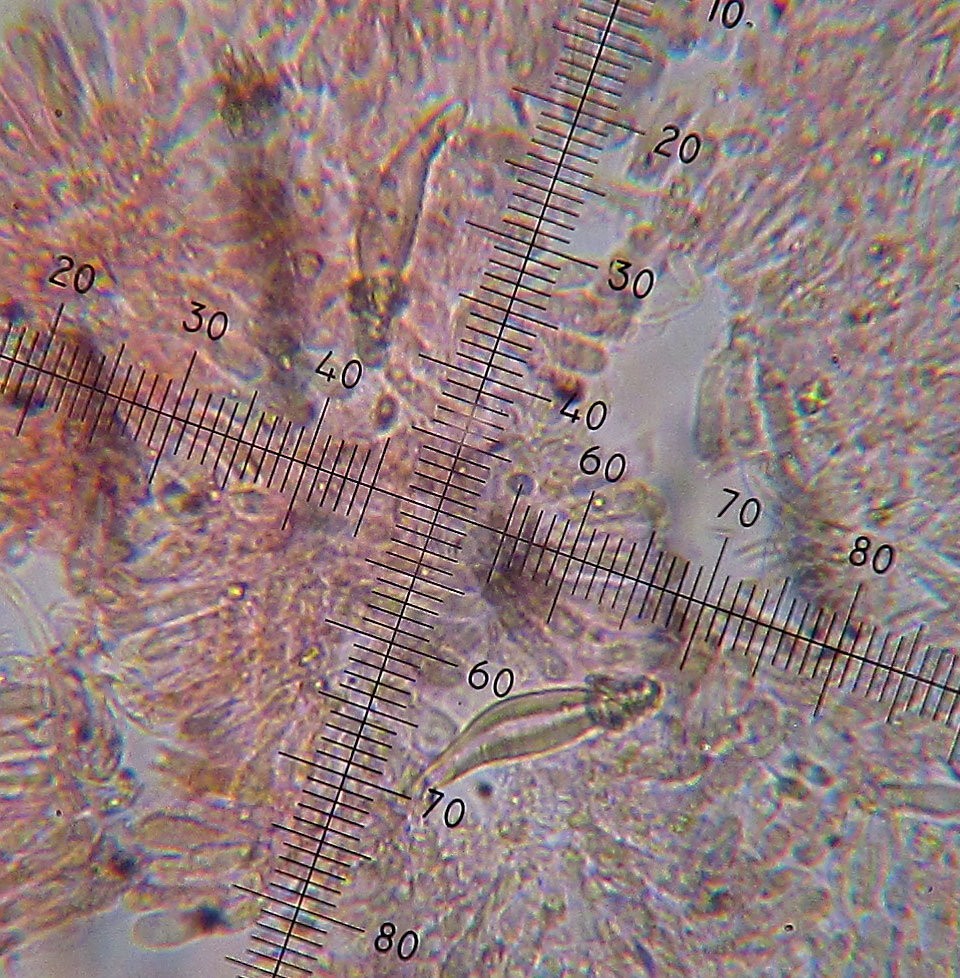Hoenbyhelia gray (Hohenbuehelia grisea)
- Division: Basidiomycota (Basidiomycetes)
- Subdivision: Agaricomycotina (Agaricomycetes)
- Class: Agaricomycetes (Agaricomycetes)
- Subclass: Agaricomycetidae (Agaricomycetes)
- Order: Agaricales (Agaric or Lamellar)
- Family: Pleurotaceae (Voshenkovye)
- Genus: Hohenbuehelia
- Type: Hohenbuehelia grisea (Hohenbuehelia gray)
:
- Pleurotus griseus
- Recumbent gray
- Hohenbuehelia grisea
- Hohenbuehelia atrocoerulea var. grisea
- Hohenbuehelia fluxilis var. grisea

The fruiting bodies are sessile, at the point of attachment to the substrate you can sometimes see some kind of stalk, but mostly Hohenbühelia gray is a mushroom without a stalk.
head: 1-5 centimeters across. In young mushrooms, it is convex, then flat-convex, almost flat. The shape is fan-shaped, semicircular or kidney-shaped, with a tucked edge in young fruiting bodies, then the edge is even, sometimes slightly wavy. The skin is moist, smooth, finely pubescent, the edge is denser, more pronounced closer to the point of attachment. The color is almost black at first, becoming blackish brown with age to dark brown, grey-brown, light gray and eventually fading to a beige, beige, “tan” color.
Under the skin of the cap there is a thin gelatinous layer, if you carefully cut the mushroom with a sharp knife, this layer is clearly visible, despite the small size of the mushroom.

Records: whitish, dull yellowish with age, not too frequent, lamellar, fan out from the point of attachment.
Leg: absent, but sometimes there may be a tiny pseudo-pedicle, off-white, whitish, whitish-yellowish.
Pulp: whitish brownish, elastic, slightly rubbery.
Smell: slightly floury or does not differ.
Taste: floury.
spore powder: white.
Microscopy: Spores 6-9 x 3-4,5 µm, elliptical, smooth, smooth. Pleurocystidia spear-shaped, lanceolate to fusiform, 100 x 25 µm, with thick (2-6 µm) walls, inlaid.

Saprophyte on dead wood of hardwoods and, rarely, conifers. From hardwoods, he prefers such as oak, beech, cherry, ash.
Summer and autumn, until late autumn, is widespread in temperate forests. The fungus grows in small groups or in horizontal clusters.
In some countries it is considered endangered (Switzerland, Poland).
The mushroom is too small to be of nutritional value, and the flesh is quite dense, rubbery. There is no data on toxicity.
Hohenbuehelia mastrucata indicated as the most similar, they overlap in size and ecology, but the hat of Hohenbuehelia mastrucata is covered not with a thin edging, but rather thick gelatinous spines with blunt tips.
Photo: Sergey.









